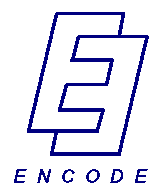Artificial
Intelligence Group Project

ENCODE: ENvironment for COnfiguration DEsign
Copernicus Project 0149 (EU funded 420k ECU)
 Partners
Partners
 Publications
Publications
 Overview
Overview
 Results
Results
Project Partners
- The Knowledge Systems
Group,
in the Knowledge Media Institute,
at the Open University,
in Milton Keynes, England.
- The Artificial
Intelligence Group at the Department
of Cybernetics and Artificial Intelligence, Technical
University, Kosice
- Czech Technical University (Czech Republic)
- DccS, Ltd. (small industrial enterprise, Czech Republic)
- ASEPO, Ltd. (small industrial enterprise, Czech Republic)
Project Overview
ENCODE workbench is based on the VITAL
methodology with a special focus on engineering design (ED). It
will provide tools for knowledge modelling, visualisation, and
implementation
of knowledge based systems (KBS). The implementation level is supported
by various modules (e.g. forward chaining, backward chaining,
constraint
satisfaction, frames, etc.). Special attention will be paid to the CLIPS
as a target language for the implementation level. ENCODE will
make
use of PC platform.
ENCODE workbench will support the following basic design
steps:
- conceptual modelling of the selected problem
The problem and its solution are modelled at the knowledge
level by
a knowledge engineer. The output is an OCML description of the solution
which contains domain description, tasks and control. In accordance
with
the philosophy introduced in \cite{Newell}, the problem is actually
solved
at the knowledge level. However, ENCODE also provides a set of
mechanisms
which could be used for implementing of the tasks.
- translation of conceptual model to the level of target
implementation
language(s)
At this step aim is to implement every primitive (leaf) task in
the
OCML description by one of the mechanisms provided by the workbench.
Following
implementation mechanisms will be provided within the ENCODE
workbench:
backward chaining (BC), forward chaining (FC), constraint satisfaction
(CS), and frame language. Moreover, the workbench will make it possible
to implement user-defined implementation tools. Each task can be
implemented
by different implementation mechanism.
Moreover, the ENCODE workbench will support the following
additional
services:
- visualisation
It will be possible to visualise the execution at various
levels of
abstraction (e.g. the OCML level, FC level, etc.)
- debugging
The visualisation modules will be used for KBS debugging. A
debugging
methodology will be worked out.
Two large pilot applications (initial car design and selection of
metal
forming technology) will be developed to test the ENCODE
methodology
and workbench.
Preliminary Results
The first version of the Constraint
Satisfaction Engine is available for testing.
Copyright © 1995 Marek Hatala





